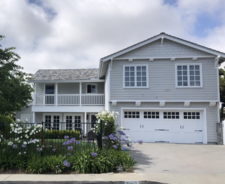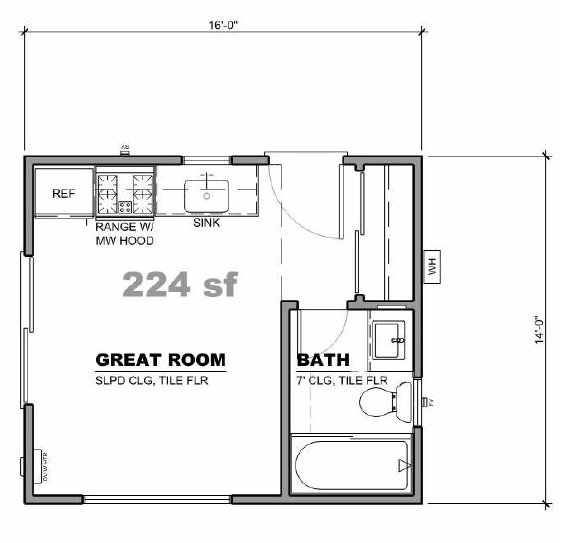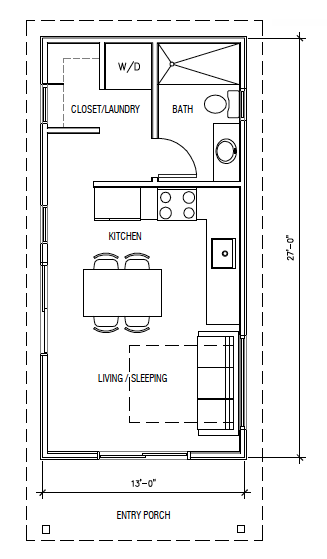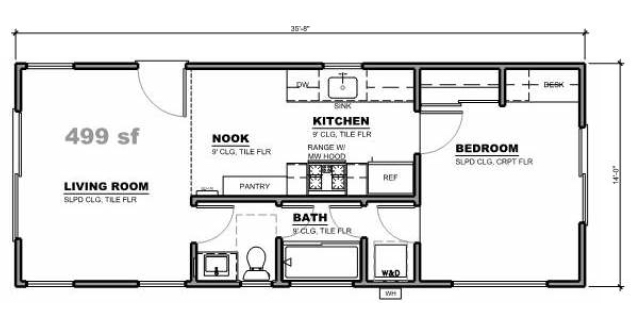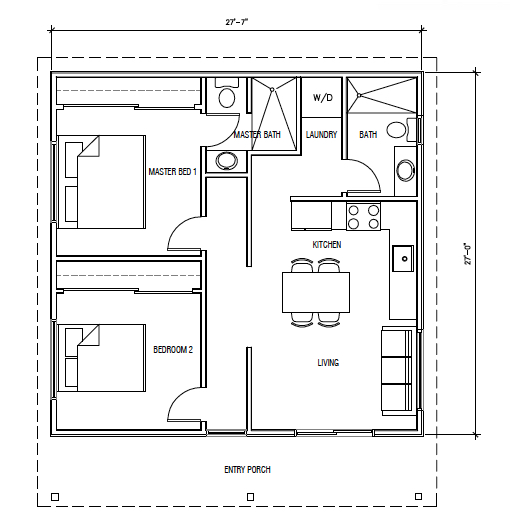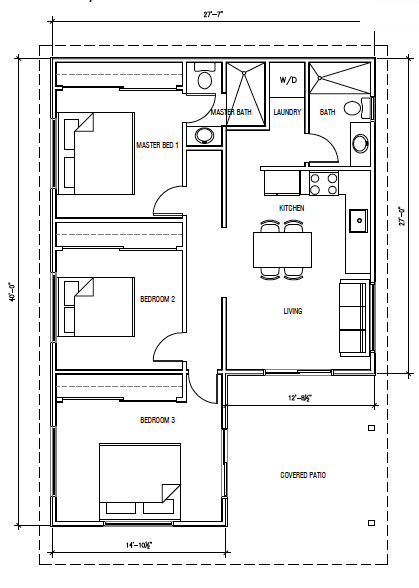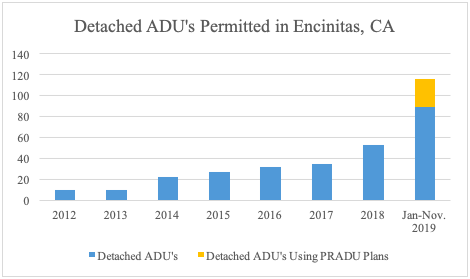A research center of the
UCR School of Public Policy

ADU Case Study
Pre-Approved ADUs: A Tool for Revitalizing California’s Affordable Housing Struggle
Design, Story & Research by Kristen Kopko; Research by Andrew Warfield
Introduction:
In recent years, Accessory Dwelling Units, independent residential units located on the property of single-family homes, have amassed a relatively large following among some of California’s leading jurisdictions, planners, and affordable housing advocates. The reasons for their rising popularity are multi-faceted: ADUs provide a compelling financial opportunity to homeowners while offering more affordable options to renters. The rising popularity of ADUs is also the subject of criticism and enmity, as ADUs challenge the “long-protected sanctity of single-family zoning” – zoning which is oft considered an integral part of the Californian Dream.1
With the passage of Assembly Bills 68 and 881, California lawmakers progressed towards eliminating red-tape for these controversial dwellings. AB-68 and 881 mandated a statewide framework to promote ADU development. The bills implement changes that bypass and reform obstinate planning laws including large setback standards, long approval periods, and prohibitively lofty fees.2, 3 Although the state has made tremendous progress towards large scale ADU development, some notable localities have taken increasing ADU development into the hands of their own planning departments.
The City of San Jose, CA, which boasts a population of about 1 million, started their pre-approved ADU program in September of 2019. The concept behind the pre-approved ADU program is simple: by offering standardized ADU plans which require no additional city or planning approval, homeowners are able to build ADUs quickly and at a much lower cost. This effort by San Jose is an attempt to fight the increasingly high housing and rental prices in Silicon Valley, an area that serves as the paragon of California’s housing unaffordability crisis. Two months after San Jose started their program, San Diego County instituted a similar program. With the creation of these two programs, pre-approved ADU plans were made accessible to two of California's most populous cities. By streamlining the planning and permitting process, pre-approved ADU plans make what was once, at best, an abstruse process into a transparent and uniform procedure for Californian planners, builders, and homeowners alike.
In April of 2019, the City of Encinitas, California, a well-to-do suburban community roughly located halfway between downtown San Diego and Orange County, released eight different pre-approved ADU plans. This case study analyzes data from this pre-approved ADU program in Encinitas, and presents policy recommendations applicable to the Inland Counties as well as the greater Los Angeles Area.
Scroll Through Our Interactive Story Map:
Background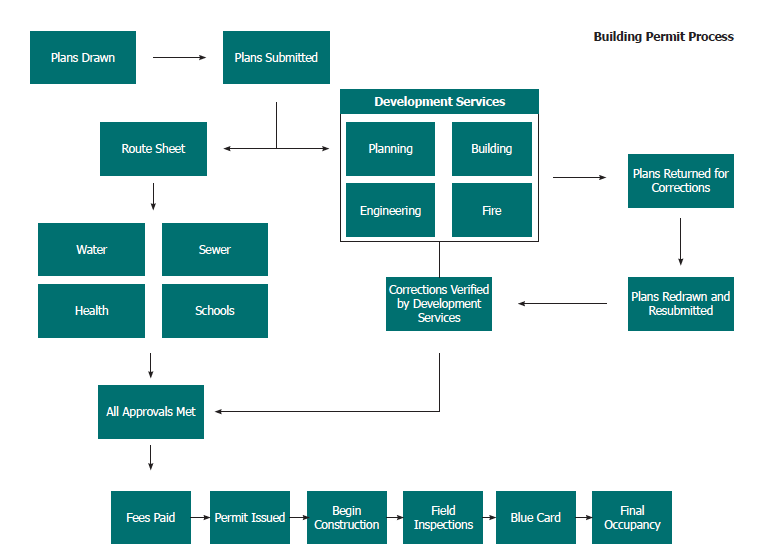
The Permit Ready Accessory Dwelling Unit (PRADU) program in Encinitas, CA has created a streamlined planning and permitting process for ADUs. The program offers 8 pre-approved construction and architecture designs for ADUs. These plans are available “over the counter” for free use to homeowners in Encinitas.4 The plans, which range from 14 to 43 pages, include exterior design options, foundation/framing plans, interior floor plans, plumbing /electrical plans, among many other design and architectural elements.
These convenient and accessible plans streamline the planning and approval procedure by eliminating the initial design process and cutting the review and approval time. The use of pre-designed plans reduces the overall cost of building an ADU by completely eliminating the initial blueprinting and design expense. The use of pre-approved and standardized plans additionally attenuates the approval time in ADUs. For example, with the use of the standardized plans from San Jose’s pre-approved ADU program, the planning, approval, permitting, and building process can take as little as 90 days.5 This is a significant reduction in the typical permitting and building process. Pre-developed and approved ADU plans are so powerful because they attack both of the fundamental challenges of ADU development: their often exorbitant development costs, and the time-consuming nature of the overall permitting process.6
Encinitas' Pre-Approved Floor Plans:
Evidence from Encinitas
Although data is relatively limited due to the novelty Encinitas' program, the preliminary progress of the PRADU program is promising and impressive. In 2019, Encinitas approved 116 ADUs, 27 of which were using PRADU plans. This is striking, especially because PRADU plans were not available until April of that year. Therefore, under the PRADU program, 27 ADUs were built in the first 8 months of the program., which constitutes approximately 25% of Encinitas’ total ADU development. Considering only 20 ADUs were built in total in 2012 and 2013, the rise in ADU popularity, boosted partially by the PRADU program, is incontrovertible.
Although not much more than speculation, the rise in ADU development in Encinitas is likely three pronged. The PRADU program, Encinitas’ elimination of certain ADU fees, and the State government's actions to make ADU development easier for such development all likely contributed to their year over year increase in Encinitas. The initial success of Encinitas’ PRADU program was undoubtedly built upon the growing acceptance for ADU development provided by pro-ADU state laws like 2017’s SB-1069 which authorized the construction of ADUs in single-family and multifamily residential zones across the state. Also as part of the effort to boost infill housing production, Encinitas waived all city development fees for ADUs.7 Therefore, the boost in ADU development was likely reinforced and supported by the PRADU plans, but not the sole causal factor.
Policy Recommendations:
Based on the evidence presented in this case study, we recommend the following policies:
- Jurisdictions should consider the development of programs to encourage the development of Accessory Dwelling Units. These programs should include a series of free pre-developed and pre-approved ADU plans available to homeowners. These programs should have the overall objective to establish processes that reduce ADU costs and minimize red tape.
- Jurisdictions should also consider the elimination of city development fees specifically for ADU Development.
- As part of this ADU development program, jurisdictions should work with community members on the development of these standards, and to otherwise educate the community on the role ADUs have in meeting state housing requirements.
Pre-approved ADU programs are not a housing growth and affordable housing panacea, but a tool to simplify the design and permit process for housing units that provide additional and affordable housing options. ADUs, when used as rental units, produce housing that typically rents at sub-market rates, and therefore offers a way to produce infill housing and support more affordable development in high-value areas.8 Providing pre-approved ADU programs is a practical method for not only increasing the development of smaller, affordable units, but increasing development of much needed cheaper housing in areas like Encinitas and San Jose. Pre-approved ADU programs, if instituted by more jurisdictions across California, have the potential to be a necessary tool to revitalize California's small scale housing development and meet low to moderate-income state housing requirements. It's likely that, considering the popularity of the HCD's planning grants for ADUs and other innovative building strategies, ADU development will continue to increase throughout California.
References
-
References
1. Hansburg, Elizabeth, and Cassius Rutherford. “Commentary: Sweeping New Laws Will Provide the Gift of ‘Granny Flats.’” Los Angeles Times. Los Angeles Times, January 3, 2020. https://www.latimes.com/socal/daily-pilot/opinion/story/2020-01-03/commentary-granny-flats-for-the-new-year-the-gift-of-sweeping-new-adu-laws.
2. “Assembly Bill No. 68.” California Legislative Information Database. State of California, October 10, 2019. https://leginfo.legislature.ca.gov/faces/billNavClient.xhtml?bill_id=201920200AB68.
3. “Assembly Bill No. 881.” California Legislative Information Database. State of California, October 10, 2019. https://leginfo.legislature.ca.gov/faces/billTextClient.xhtml?bill_id=201920200AB881&search_keywords=%22Accessory+Dwelling+Unit%22.
4. Rep. Housing for Generations: A Guide to Building Accessory Dwelling Units in Encinitas . City of Encinitas, CA
5. Angst, Maggie. “San Jose’s First Pre-Approved Granny Unit Permitted and Built in Just 12 Weeks.” The Mercury News, March 5, 2020. https://www.mercurynews.com/2020/03/05/san-joses-first-pre-approved-granny-unit-permitted-and-built-in-just-12-weeks/#:~:text=In%20addition%20to%20the%20new,and%20developers%20to%20obtain%20a., 2019. https://encinitasca.gov/Portals/0/City%20Documents/Documents/Development%20Services/Planning/Advanced%20Planning/ADU/ADU-PRADU%20Catalog.pdf.
6. McCarthy, Bonnie. “Backyard Landlord: What to Know before Building an ADU or Granny Flat.” Los Angeles Times. Los Angeles Times, February 14, 2020. https://www.latimes.com/home/la-hm-adu-big-picture-20190606-story.html.
7. Rep. Housing for Generations: A Guide to Building Accessory Dwelling Units in Encinitas . City of Encinitas, CA
8. Chapple, Karen, Jake Wegmann, Farzad Mashhood, and Rebecca Coleman. Rep. Jumpstarting the Market for Accessory Dwelling Units: Lessons Learned from Portland, Seattle AND Vancouver. San Francisco, CA: Urban Land Institue, 2017.
Photos of Encinitas by: Kristen Kopko
Building Permit Graph & ADU Plans by: Encinitas Planning Department
